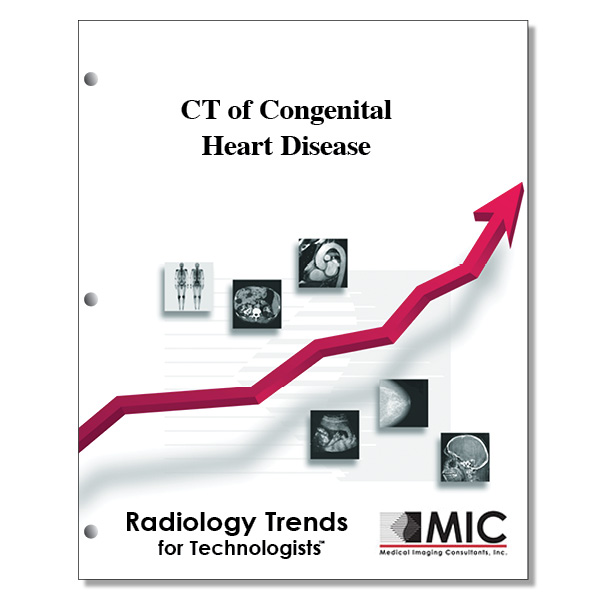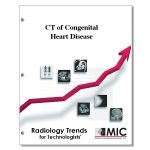

CT of Congenital Heart Disease
The role of multi-detector CT as an adjunct to echo-cardiography for evaluating congenital heart disease is presented.
Course ID: Q00192 Category: Radiology Trends for Technologists Modalities: Cardiac Interventional, CT, Nuclear Medicine2.75 |
For CT technologists |
Satisfaction Guarantee |
$29.00
- Targeted CE
- Outline
- Objectives
Targeted CE per ARRT’s Discipline, Category, and Subcategory classification for enrollments starting after February 8, 2023:
[Note: Discipline-specific Targeted CE credits may be less than the total Category A credits approved for this course.]
Cardiac-Interventional Radiography: 2.00
Procedures: 2.00
Diagnostic and Electrophysiology Procedures: 2.00
Computed Tomography: 2.75
Procedures: 2.75
Neck and Chest: 2.75
Nuclear Medicine Technology: 2.00
Procedures: 2.00
Cardiac Procedures: 2.00
Registered Radiologist Assistant: 2.00
Procedures: 2.00
Thoracic Section: 2.00
Outline
- Introduction
- Scanning Technique
- Radiation Exposure
- Sequential Segmental Approach
- Normal Anatomy
- Atria
- Ventricles
- Great Arteries
- Great Veins
- Normal Connections
- Extracardiac Abnormalities
- Aortic Coarctation
- Anomalous Pulmonary Venous Connection
- Patent Ductus Arteriosus
- Intracardiac Communications
- Atrial Septal Defect
- Ventricular Septal Defect
- Conotruncal Defects
- Tetralogy of Fallot
- Common Arterial Trunk
- Abnormal Connections
- Univentricular Heart
- Transposition of the Great Arteries
- Congenitally Corrected Transposition of the Great Arteries
- Double Outlet Ventricle
- Isomerism
- Conclusions
Objectives
Upon completion of this course, students will:
- understand pitfalls of echocardiography
- realize limitations of conventional angiography
- realize limitations due to contraindications of MRI
- understand benefits of MDCT
- learn proper applications for ECG gated CT
- be aware of increased radiation dose with ECG gated CT
- know sequential segmental approach
- understand correct anatomic sidedness
- comprehend normal cardiac connections
- understand normal atrial morphology
- understand normal ventricular morphology
- be able to determine normal ventricular sidedness
- be familiar with normal thoracic aortic anatomy
- be able to determine anatomic sidedness of the lungs
- understand flow dynamics of the right atrium
- understand flow dynamics of the left atrium
- know the location of the tricuspid valve
- know the location of the mitral valve
- be able to identify extracardiac anomalies
- understand aortic coarctation
- understand variations of anomalous pulmonary veins
- learn the physiology of patent ductus arteriosus
- understand the value of CT imaging of patent ductus arteriosus
- know the three types of atrial septal defects
- understand ventricular septal defect
- know the anomalies associated with tetralogy of Fallot
- be able to identify common arterial trunk
- be able to identify univentricular heart
- understand the physiology of transposition of the great vessels
- know the health ramifications of transpositions of the great arteries
- understand the physiology of congenitally corrected transposition of the great vessels
- be able to describe a double outlet ventricle
- understand isomerism
- be able to characterize right and left isomerism
- understand how CT may be utilized as an adjunct to other modalities for patients with congenital heart disease
